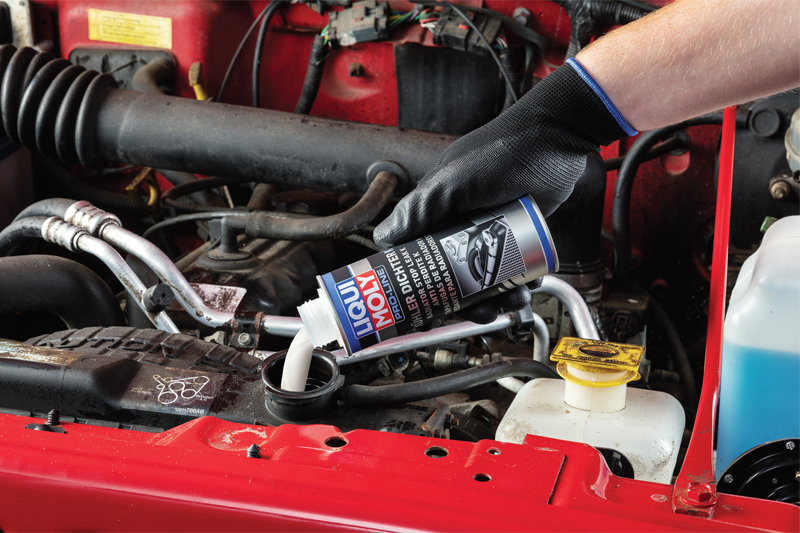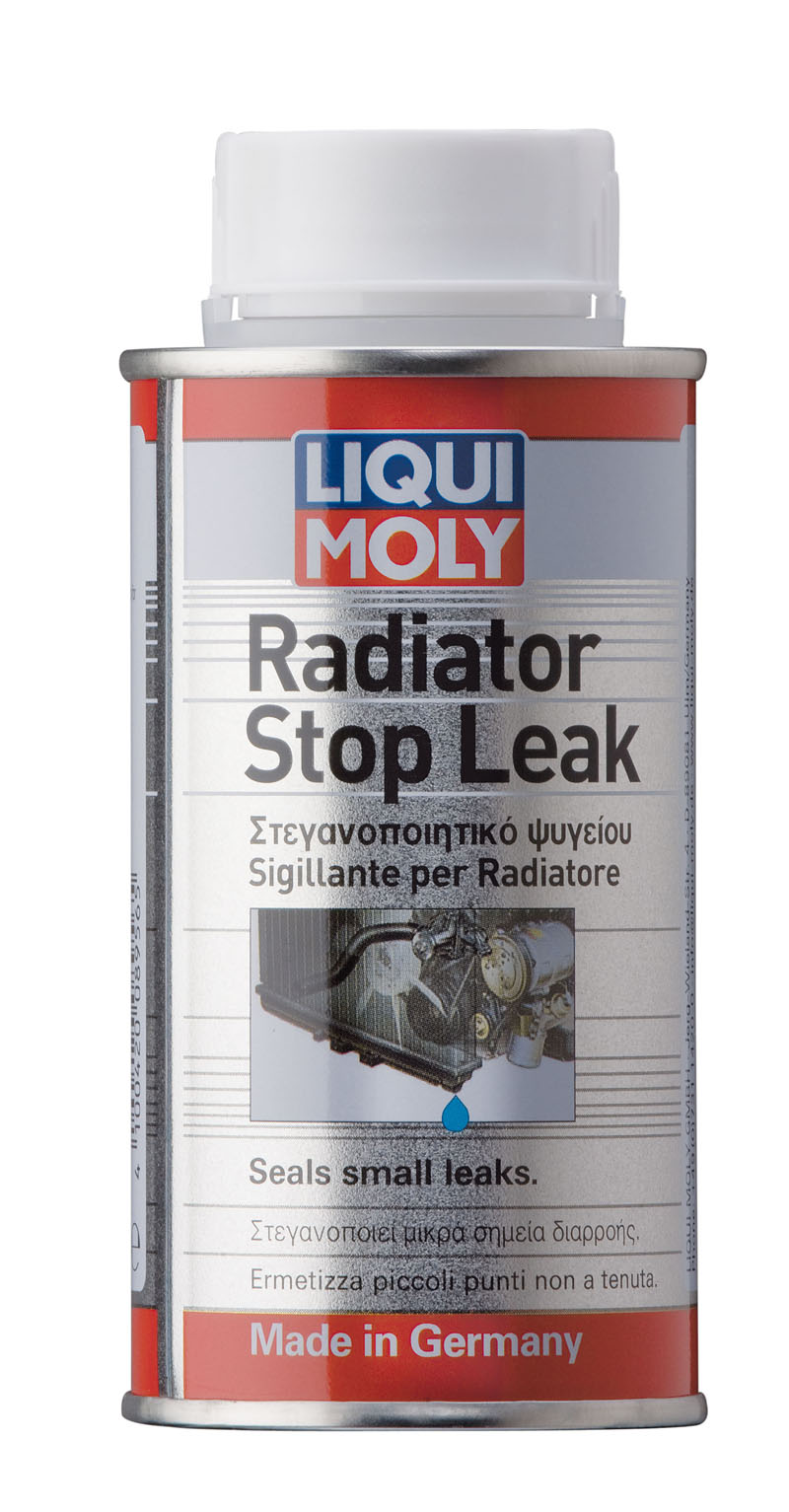
Leaking cooling systems are annoying and eliminating leaks can be very time-consuming. Using a stop leak solution is a quick fix; simply add the additive to the coolant and it should block any small leakages. Liqui Moly explains how the company’s own Radiator Stop Leak formula does the job.
Small plastic particles are the secret ingredient of the additive. They circulate within the system together with the coolant. If the pressure drops as a result of a leak, the particles collect in this area to quickly seal the leak. The remaining particles continue to circulate within the cooling system, ready to seal the next leak.
Consequently, it is possible to eliminate leaks in the radiator (e.g. caused by stone chip) in a simple, straightforward way. It is not necessary to replace lines or the radiator. The particles are small enough not to collect in the pump or block the filter.

When added to a sealed cooling system, Liqui Moly’s Radiator Stop Leak constantly circulates within the system to immediately seal any developing leaks. It is claimed that vehicle users don’t even notice that they would otherwise have a leaking cooling system. The product works very well for small cracks, however, bigger holes are beyond the capabilities of this additive and require a complete repair.
Another great chemical tool for radiators is the company‘s Radiator Cleaner. Deposits in the cooling system prevent the exchange of heat and can block the thermostat. The product dissolves these deposits effectively, without being aggressive to other materials; it does not contain any aggressive acids or lyes, and is acid-neutralising and compatible with rubber and plastics. Finally, it is worth mentioning that it can also be used as a preventative measure during service to eliminate deposits before they become a serious problem.

Simply add this to the coolant and allow the engine to idle for 10 to 30 minutes, depending on the degree of contamination. During this time, the active ingredients dissolve the deposits and contamination, which can then be drained simply together with the coolant. In this instance, it is only necessary to flush the radiator with water and refill it.









